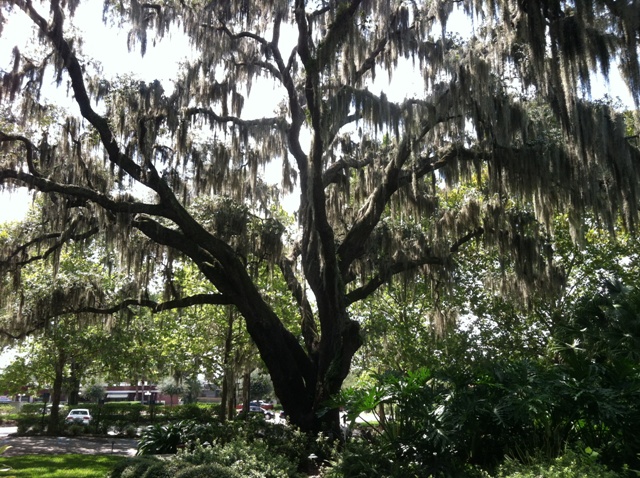• Friday, August 31st, 2012
As TS/Hurricane/TS Isaac is still hammering the Mississippi Delta and our thoughts and prayers are with all those affected, it makes us think of the ravaging effect nature can have on people and their environment including trees. When Hurricane Charley hit our neighborhood in our city in Central Florida, over 400 oak trees were down. It was a strange time having no water or electricity for days and having to chop and move fallen trees to get to the main road. For months and years later, the remaining trees were affected. Most had their leaves blown right off and at their rebirth the leaves were so close to the huge branches – just like after we do a hard chop on a bonsai. A trip to Georgia and seeing the lush, green leafy trees reminded me of how much our landscape had changed. But ultimately, secondary and tertiary branching happened and the trees’ leaves filled out and normalized. Then new trees were planted and we compared their upright branches to the downward, heavier, gnarly branches of the older trees that seemed much more aged after the storm. Bonsai! That’s the look I had been trying to achieve. All we have to do is look around and emulate what we see. Easy, right?
I started paying more attention and was encouraged in a Peter Warren Chinese Elm workshop in May to wire correctly all the time. Then in July at Tropical Bonsai School, I noticed that some of the best-looking trees were older trees that had been gifted or inherited from older club members. They had substantially more movement in the branches - natural aging. Wiring, care & time had combined to create trees worthy of exhibit display. The significance of wiring became very clear, proper wiring, that is. Also key is to remove the wire at the right time – not too soon, not too long. Like a clay sculptor, with passion we sculpt our trees with wiring and carving to create our ‘masterpiece’. Also, like a painter or sculptor, practice, practice, practice paves the way to the finest works of art. I’m still a fan of ‘clip and grow’ for some tropicals that aren’t conducive to wiring, but when there is opportunity wire will improve the trees faster and better. Take a look at the Wiring Techniques video on Orlando Bonsai and tomorrow when you’re in the bonsai garden or at the next bonsai exhibit, take a new look at the trees with only wire and branch movement in mind. Then, as always, take action when the time is right!

- Majestic old live oak tree
- ( at the Enzian Theatre looking out from the Eden Bar)

 Share on Facebook
Share on Facebook
• Monday, July 16th, 2012
July 1 – 7 – seven straight days of bonsai. I attended Tropical Bonsai School, Year One directed by Bonsai Master Pedro Morales. Pedro travels extensively as a bonsai speaker and artist and has a nursery in Puerto Rico and the class was at Wigert’s Nursery in Ft. Myers Florida. It’s a 3 year program with an optional fourth year. We celebrated Independence Day working on Bonsai but I did wear my USA red tee shirt and watched fireworks on the way home and later on television. My hands felt like they had run a marathon by week’s end. Although they are used to working all day long, using bonsai tools, bending branches and pulling guy wires ALL DAY is a whole different exercise. Highlights of the week included working on trees using new techniques, educational powerpoint presentations, learning about specific tropical trees and then working on them, making a karama (cement pot/slab), eating Pedro’s cooking at our dinner celebration (yummy), spending time with new and old friends, walking through the nursery and a wonderful sense of accomplishment. I worked on big trees and little trees, all tropicals – each one with their own good features and little challenges. To improve at bonsai involves paying attention to your tree(s) and practice. Practice analyzing options, cutting, styling, pruning, wiring, potting etc. Like with computers, bonsai is a life long learning process and people are at all different stages and that’s okay. We learn from each other – novice, intermediate, professional and master. Reading is very important but to learn from other bonsai artists and masters and from other people’s trees is a wonderful opportunity. The trees themselves teach you a lot if you will just look. Speaking of looking, check Orlando Bonsai’s Facebook page for pictures. Our group picture is there as well as a small Ilex that I worked on but haven’t finished yet. I will add more pictures in the coming days so check back often. I highly recommend a focused period of bonsai – pick some trees and some time and focus on something you want to improve i.e. wiring, certain styles, a new technique, watering, pest control etc. Have your own backyard bonsai workshop and work on a tropical tree or two or three!

 Share on Facebook
Share on Facebook
• Monday, June 18th, 2012
The summer rains are almost daily in Florida now. That still means monitoring daily to make sure the trees receive enough water. Although the bonsai were watered this morning and there was a very brief mid-day shower, it was so hot some trees were wilting by late afternoon and required a second watering.
June 1 is the official start of hurricane season. Did you know that Native trees suvived the hurricanes better than non-natives? Buttonwood, live oak, red maple, and cypress are all examples of good trees for hurricanes while Australian pine, ficus, laurel oak, and black olive are not storm resistant. Maybe we are helping out by turning them into bonsai. Since the good hurricane trees also make great bonsai, they too should be added to collections. And it’s always a good idea to anchor your trees into the pot in case a heavy wind comes along.
Along with the rains come the pests so be sure to look for leaf changes and deal with pests quickly when you find them through natural organic (or non organic means if you must). If you want your bonsai to live, you may want to follow the directions. And if you see lady bugs, look closer with your magnifying glass to see what they are feeding on. Lady bugs are a natural pest control and can be purchased by the hundreds. Now, don’t even get me started on mosquitoes. They don’t hurt the bonsai but all the rains caused a new batch to hatch. Got out the citronella candles and put on skin-so-soft (thank you, Avon ©) and finished weeding the bonsai garden, well almost…!

 Share on Facebook
Share on Facebook
• Wednesday, April 04th, 2012
Get out of the house and into the garden. It’s all about Spring Greening now. Abundant sunshine, fertilizer and water = Greening and Growing = Beautiful Bonsai. A few other ’ings’ to add to your SPRING besides fertilizing are pruning, cutting, mixing, moving, styling, wiring and displaying. It’s that busy time of year again – the leaves and flowers are popping out all over so it’s time to get that growth under control – amazing what a few hours in the garden will accomplish. Hopefully your tools are sharp, your pots clean, your soil on hand and a plan in mind! No? Well, if not Orlando Bonsai is here to meet your springtime bonsai tool and supply needs. If you can’t find something on the site, just send an email inquiry and we may have it or find it. We have a number of pots, trees and display stands that aren’t shown on the site so let us know what you have in mind so you can move on to your Spring Greening too!

 Share on Facebook
Share on Facebook







